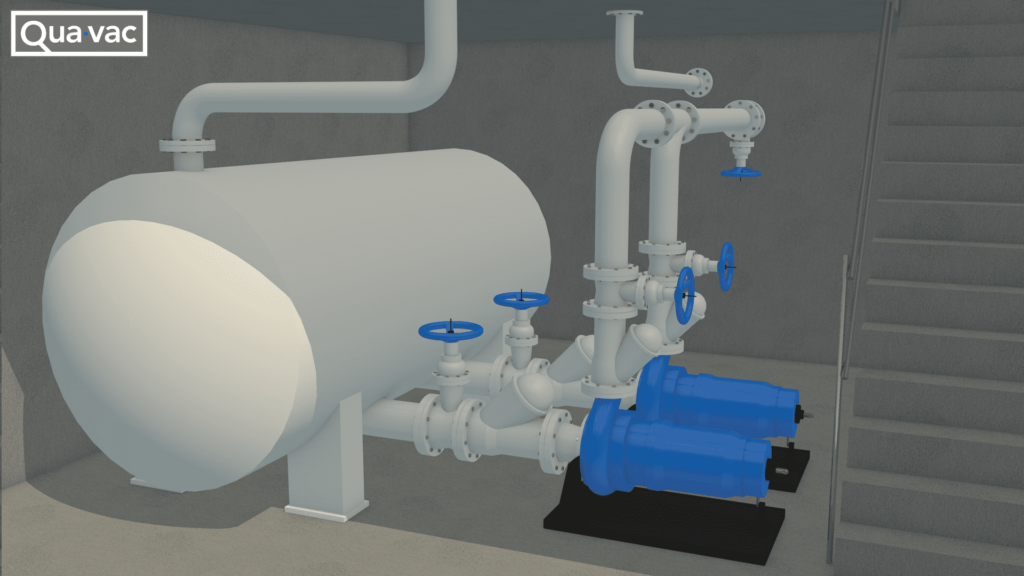Vacuum tank
In the wastewater system, vacuum pumps create a pressure differential, guiding wastewater into a vacuum tank at the station. This tank temporarily holds the wastewater until a predetermined level triggers pressure pumps to transport it to the treatment plant, ensuring efficient and controlled wastewater transfer.






